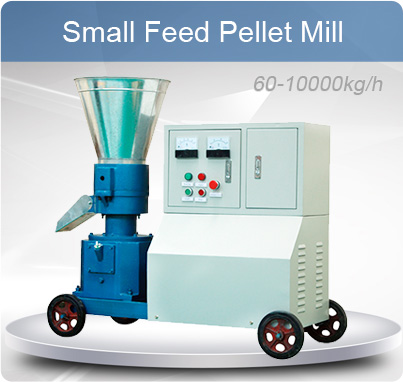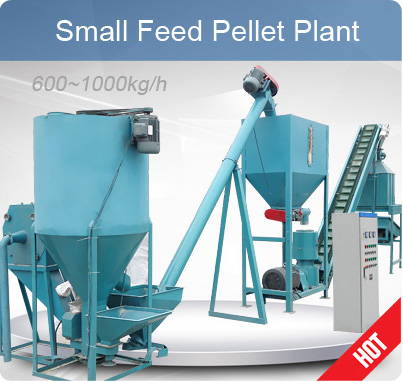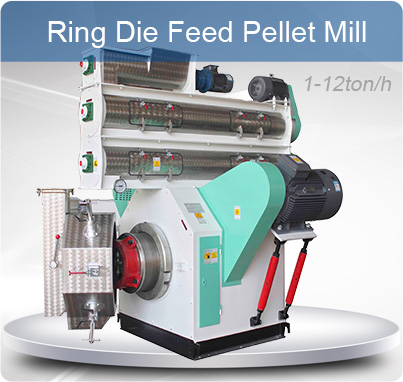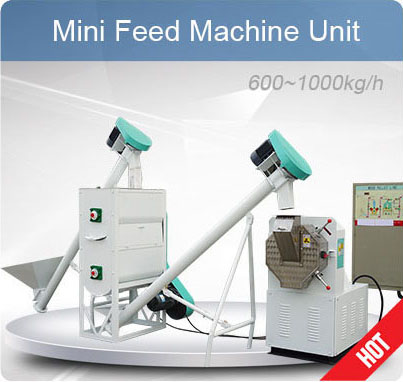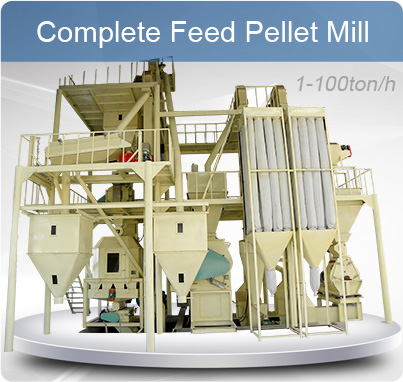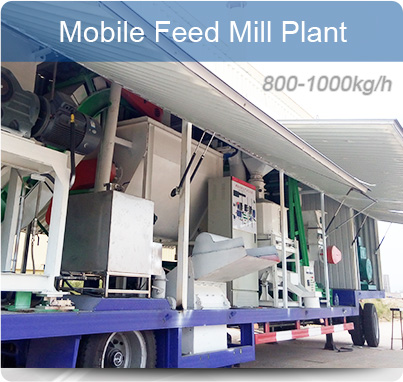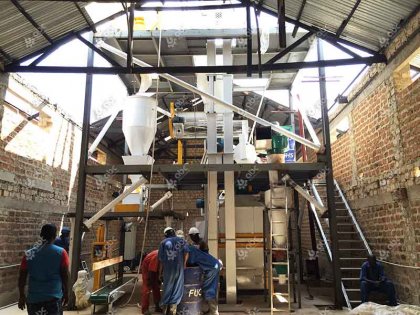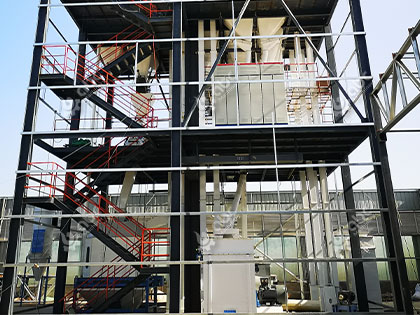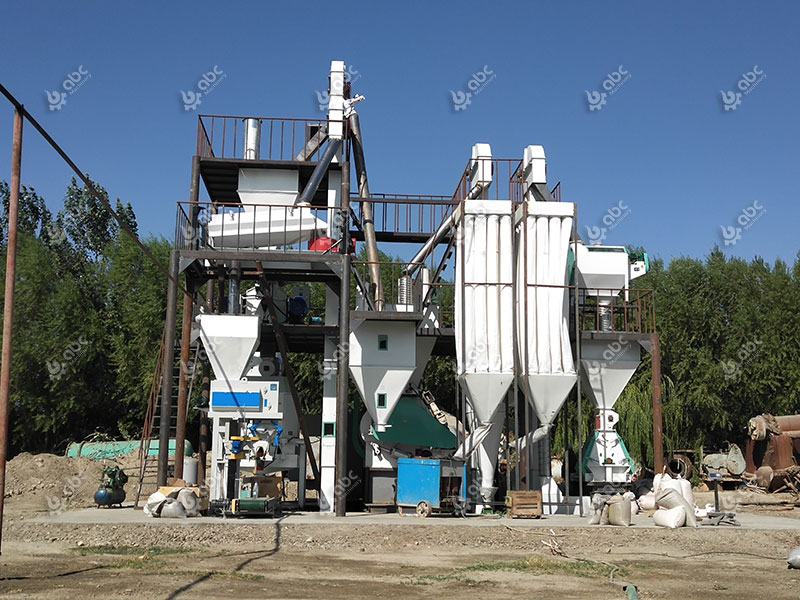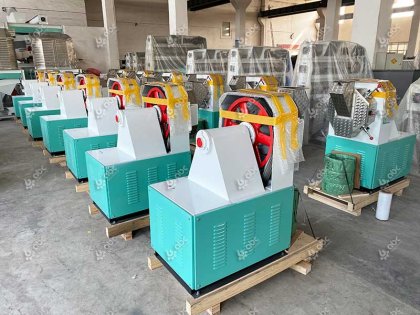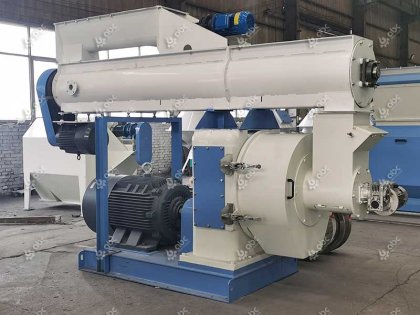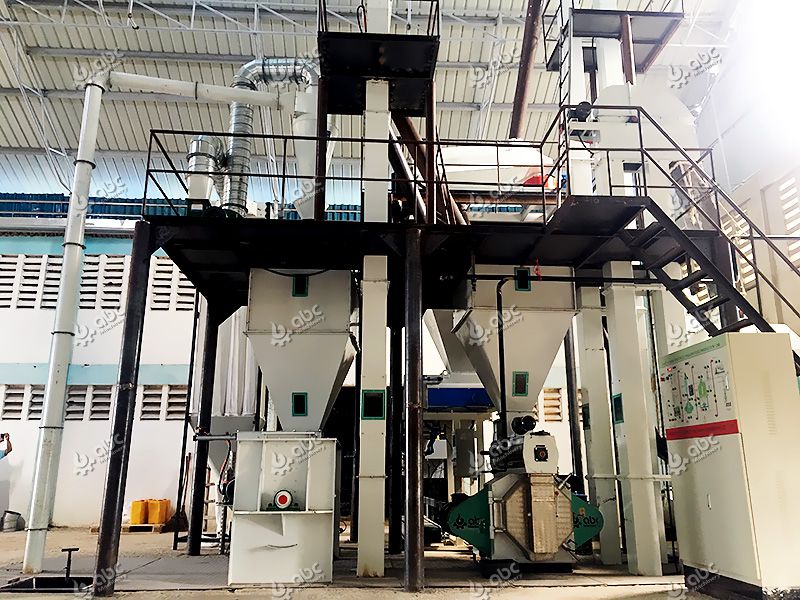In modern cattle farming, cow feed pellets have become one of the most efficient and profitable solutions for providing balanced nutrition. Compared with traditional loose feed, cow feed pellets offer better digestibility, less wastage, and higher growth efficiency. For investors, farmers, and entrepreneurs, starting a cow feed business or building a cow feed plant is not only profitable but also sustainable in the long run.(Related post:Feed Pellet Plant for Cattle)
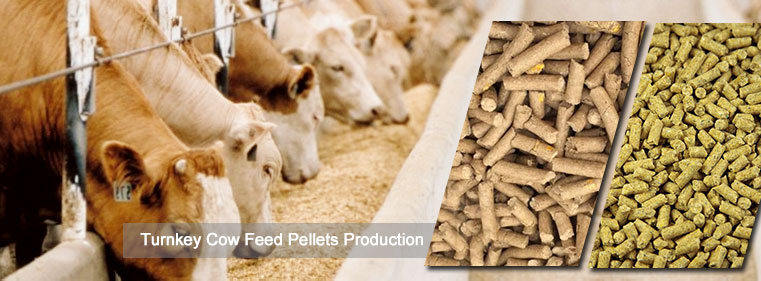
Efficient Cow Feed Pellets Production
Nutritional Value and Advantages of Cow Feed Pellets
Balanced Nutrition with Cow Feed Formula
Cow feed pellets are produced by compressing corn, soybean meal, wheat, and supplements into a uniform pellet form. A well-designed cow feed formula ensures that protein, minerals, and vitamins are evenly distributed for optimal cattle performance.
Improved Digestibility and Milk Yield
Pelleting increases feed intake and nutrient absorption, boosting beef cattle growth and dairy cow milk yield.
Reduced Wastage and Cost Efficiency
Pellets minimize feed loss and dust, which makes them more economical than loose meal feed.
Additives, Supplements, and Organic Options
Farmers can add probiotics, vitamins, or even produce organic cow feed pellets to meet growing eco-friendly market demands.

Cow Feed Pellets for Cost-Effective Feeding
Cow Feed Formula by Growth Stage
| Growth Stage | Nutrition Focus | Recommended Cow Feed Formula (Typical %) | Key Benefits |
|---|---|---|---|
| Calves (2–6 months) | High protein & energy for rapid growth and rumen development |
- Corn/energy grains: 40–45% - Soybean meal/rapeseed meal: 25–30% - Wheat bran: 10–15% - Minerals (Ca, P, salt): 3–4% - Additives (vitamins, probiotics): 1–2% |
Supports fast weight gain after weaning, improves immunity, promotes skeletal and muscle growth |
| Growing Cattle (6–18 months) | Balanced protein and energy for muscle development |
- Corn/wheat: 45–50% - Soybean meal/cottonseed meal: 18–22% - Wheat bran/rice bran: 15% - Molasses: 3–5% - Minerals & vitamins: 2–3% |
Ensures steady growth, enhances feed efficiency, reduces feeding cost |
| Dairy Cows (Lactating) | High energy + calcium/phosphorus balance for milk yield |
- Corn/barley: 40–45% - Soybean meal: 18–22% - Alfalfa meal: 15% - By-products (DDGS, cottonseed): 10–12% - Minerals (Ca, P, Mg): 3–4% - Additives (yeast, probiotics, vitamins): 2–3% |
Increases milk production and quality, improves reproductive health, prevents metabolic disorders |
| Beef Cattle (Fattening phase) | High energy for faster fattening and better meat quality |
- Corn/sorghum: 55–60% - Soybean meal: 12–15% - Wheat bran/rice bran: 10% - Molasses: 4–5% - Minerals & vitamins: 2–3% |
Shortens finishing period, enhances marbling, improves carcass yield |
Market Trends and Cow Feed Business Opportunities
Global Demand for Cow Feed Pellets
The demand for cow feed pellets is rising quickly as beef and dairy consumption grows worldwide. In Asia, population growth and urbanization are increasing the need for safe and efficient cattle feed. In Africa, more farmers are shifting from traditional grazing to semi-intensive farming, which creates strong demand for pellets that save labor and improve cattle growth. South America, being one of the largest beef exporters, also shows a strong appetite for modern pellet feed to boost production efficiency and meet international standards. Simply put, cow feed pellets are becoming the “new normal” in global cattle nutrition.

Cow Feed Plant Solution with Modern Machines
Regional Opportunities for Cow Feed Plants
While demand is growing fast, many regions still lack enough modern cow feed plants and cow feed mills. In rural Africa, most smallholders still rely on loose feed or home-mixed rations, which are often unbalanced and less efficient. Setting up a small or medium-sized cow feed mill in such areas can quickly capture the local market. In Asia, especially countries like India, Vietnam, and Bangladesh, dairy farming is expanding, and the need for cow feed plants with higher capacity is increasing. Investors who can offer consistent quality pellets have a clear advantage in these emerging markets.
Profitability of the Cow Feed Business
One of the biggest reasons why the cow feed business is attractive is profitability. Pellets are easier to transport, last longer in storage, and reduce wastage compared with meal feed. This means farmers save money while getting better cattle performance. For entrepreneurs, margins are strong because the demand is stable year-round — dairy cows need pellets daily, and beef cattle require high-energy feed during fattening. Whether you start with a single cow feed making machine for local sales, or invest in a large cow feed plant for exports, the cow feed business offers a steady and growing source of income.
Cattle Feed Manufacturing Process and Equipment
Producing high-quality cow feed pellets relies on a few key steps, with pelletizing being the most important.Crushing & Mixing – Raw materials like corn, soybean meal, and wheat are crushed and blended according to the right cow feed formula.
Pelletizing – This is the core step where a cow feed making machine transforms the mixed feed into uniform, durable pellets. A quality cow feed pellet machine offers:
- Consistent Pellet Quality – Uniform size and hardness reduce feed wastage.
- Improved Digestibility – Properly compressed pellets enhance nutrient absorption.
- High Efficiency – Modern machines can produce tons of pellets per hour, suitable for small farms or large cow feed plants.
- Customizable Pellet Size – Adjust pellet diameter for calves, dairy cows, or beef cattle.
- Cooling & Packaging – Pellets are cooled to harden and then packed for storage or sale, ensuring ready-to-use, high-quality feed for all cattle types.

Cow Feed Making Machine
A cow feed making machine is the heart of any cow feed plant. It efficiently converts mixed ingredients into high-quality cow feed pellets, improving feed utilization and supporting healthy cattle growth.
- Consistent Quality and Customizable Sizes – The machine ensures uniform pellet size and hardness, with adjustable diameters to meet the nutritional needs of calves, dairy cows, or beef cattle.
- High Efficiency for Any Scale – Modern machines can produce tons of pellets per hour, making them suitable for small farms, regional feed suppliers, or large-scale cow feed business operations, helping you maximize production and profitability.
From calves to dairy cows and beef cattle, ABC Machinery provides cow feed pellet machines with adjustable sizes and consistent quality, ensuring that every animal gets the right nutrition. With flexible pellet diameter options and reliable performance, our machines are designed to meet the feeding needs of farms and feed plants of all scales.
Investment Options for Cow Feed Mills and Plants
Single Cow Feed Making Machine (Small-Scale)
Ideal for family farms or cooperatives.
Low cost, easy operation.
Mainly for making cow feed for self-use, with small-scale local sales.
Small Cow Feed Mill (1–2 Tons/Hour)
Perfect for regional feed suppliers.
Balanced investment with quick returns.
Business model: cow feed business targeting local markets.
Medium & Large Cow Feed Plant (5–20 Tons/Hour)
Fully automated production for regional wholesale or export.
High consistency, bulk supply, and long-term profitability.
Contact us today to get professional solutions for cow feed pellets production. Our advanced technology and complete cow feed mill setups will help you maximize efficiency and profitability.




